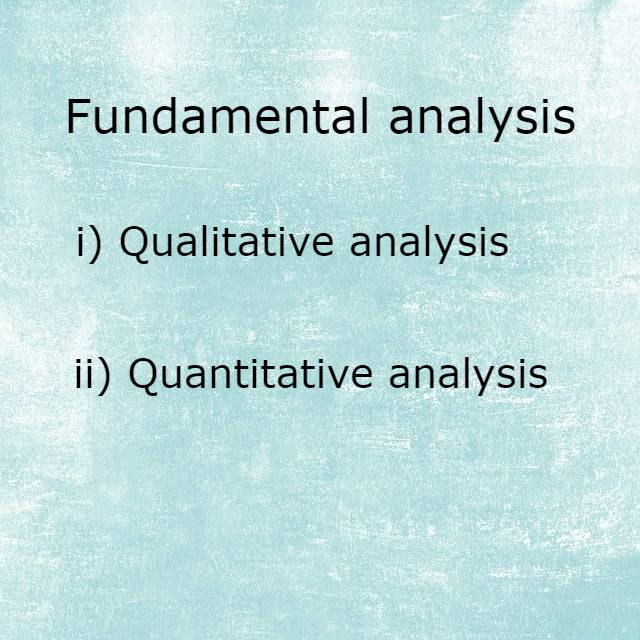Fundamental analysis is based on the assumption that the share prices depends upon future dividends expected by the shareholders.
Further, there are basically two approaches of security analysis- Fundamental analysis and technical analysis. In this blog we will learn the fundamental analysis of security analysis.
Table of content
1.What is fundamental analysis?
2. What are the types of fundamental analysis?
What is fundamental analysis?
As mentioned above , fundamental analysis is based on the assumption that the share prices depends upon future dividends expected by the shareholders. The present value of future dividends can be calculated by discounting cash flows at an appropriate discounting rate . And it is known as ‘ intrinsic value of shares’.
Further, the intrinsic value of shares , according to the fundamental analyst , depict the true value of shares. A share that is below the intrinsic value must be bought , while a share quoting above the intrinsic value must be sold.
Thus , it can be said that the price the shareholders are prepared to pay for a share is nothing but the present value of the dividends they expect to receive on the share and this is the price at which they expect to sell it in the future.
At first step let us make simple assumption, that the company is expected to pay a uniform dividend of ₹ D per share every year, i.e. ,
D(1) =D(2) = D(3) = ….=D, ..(i)
The equation would then become :
P(0) = D/(1+K) +D/(1+K)2 +D/(1+K)3 + …+… …..(ii)
and P(0) = D/K ….(iii)
But it is unrealistic it assume that dividend remains constant over time . In case most of shares, the dividend per share grows because of the growth in the earnings of the firm. Most companies , as they identify new investment opportunities for growth , growth tend to increase their DPS over a period of time.
Lets us assume that on an average the DPS of the company grows at the compounded rate of g per annum , so that dividend D(1) (1+g) , D(1)(1+g)2 , etc. at the end of second period , third period etc. , respectively . So we must have :
P(0) = D(1)/(1+K) +D(1)(1+g)/(1+K)2 +D(1)(1+g)2/(1+K)3 + …+… (iv)
If growth rate in dividends, g, is less than the desired rate of return on shares , k, we must have
P(0) = D(1)/(K-g) (v)
or
P(0)= D(0) (1+g)/(K-g) (vi)
What are the types of fundamental analysis?
There are two types of fundamental analysis i) Qualitative analysis ii) Quantitative analysis
i) Qualitative analysis
Qualitative analysis means the study of consumer behavior, demand, companies goodwill , companies recognition in broader market. The objective of this analysis is to answer to questions like how management decisions or announcement create buzz in the market and how is different from competitors.
ii) Quantitative analysis
Quantitative analysis involves statistics, reports and data. Further, this analysis is based on financial statements, performance, balance sheet and debts , cash flows. In this we study the ratios, numbers and value, to know the price of shares and company’s overall performance.



